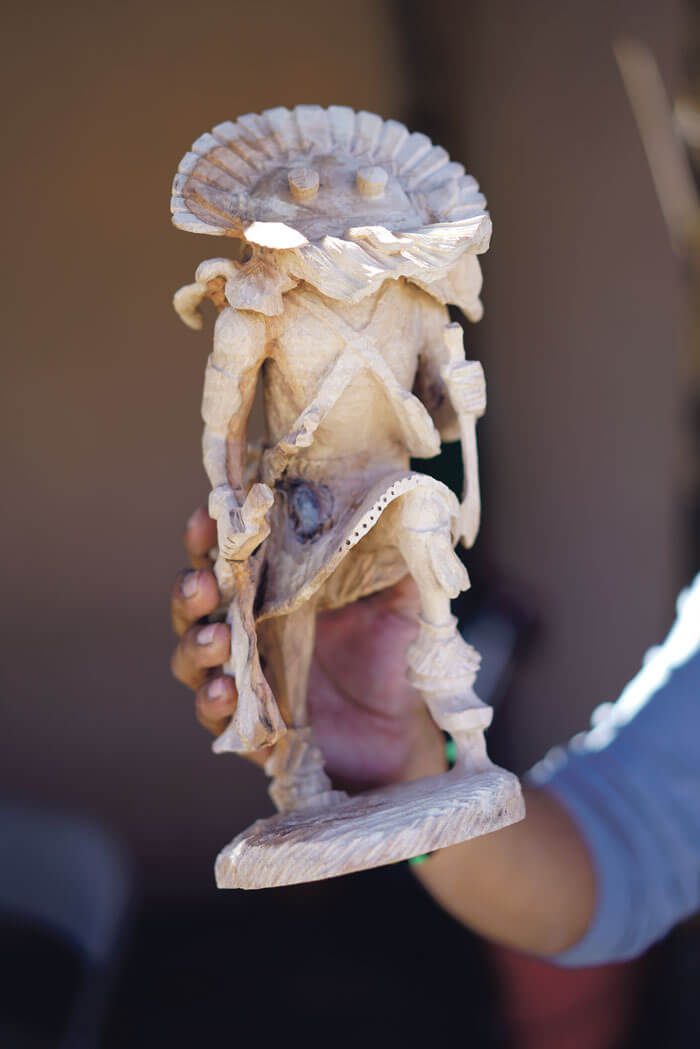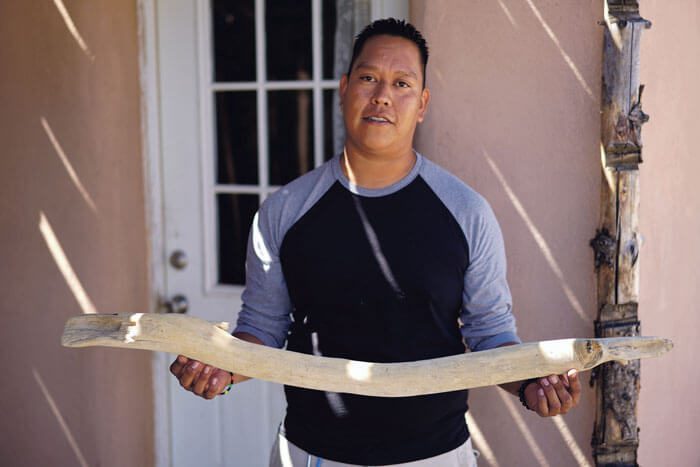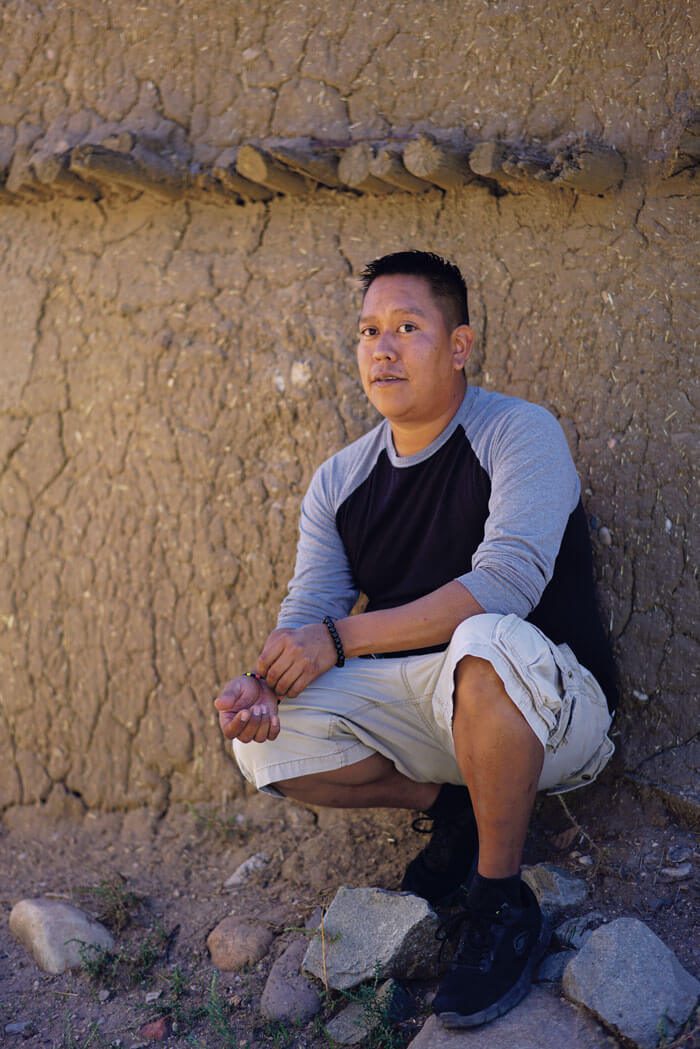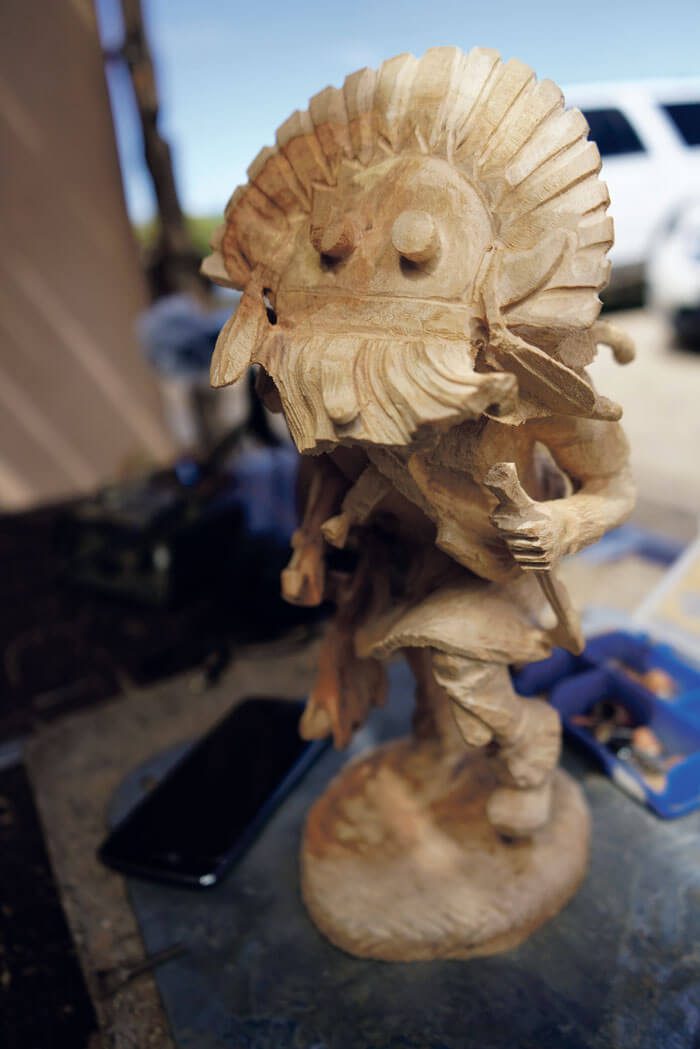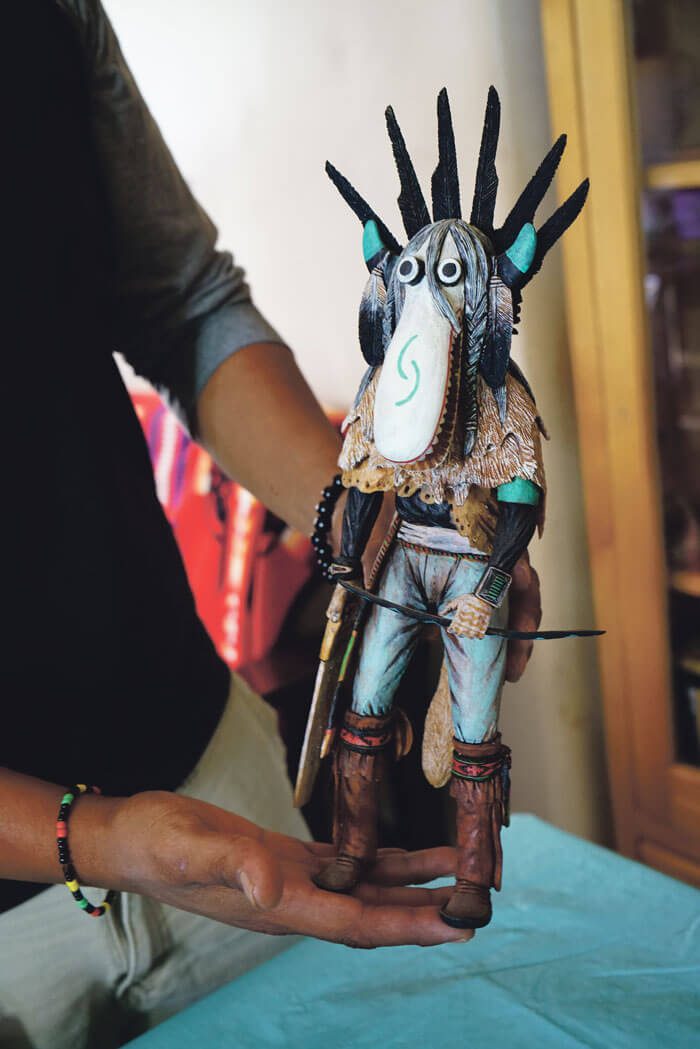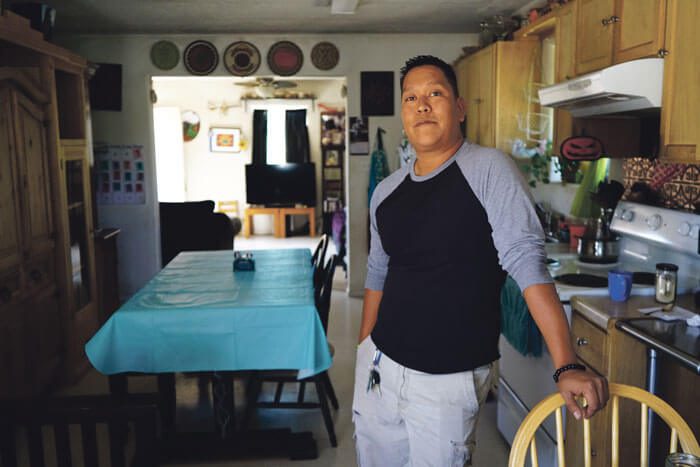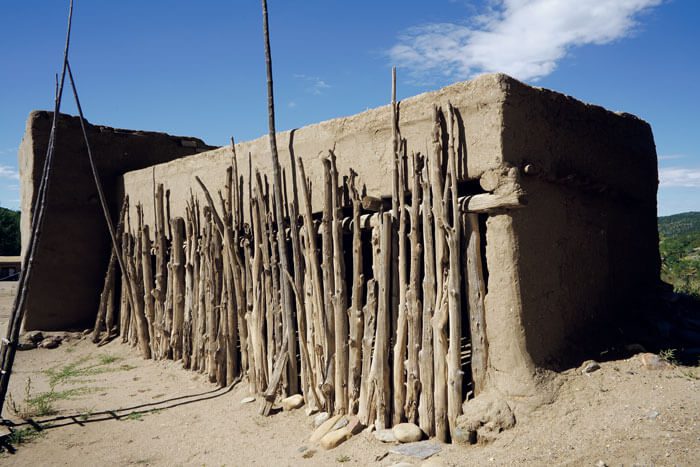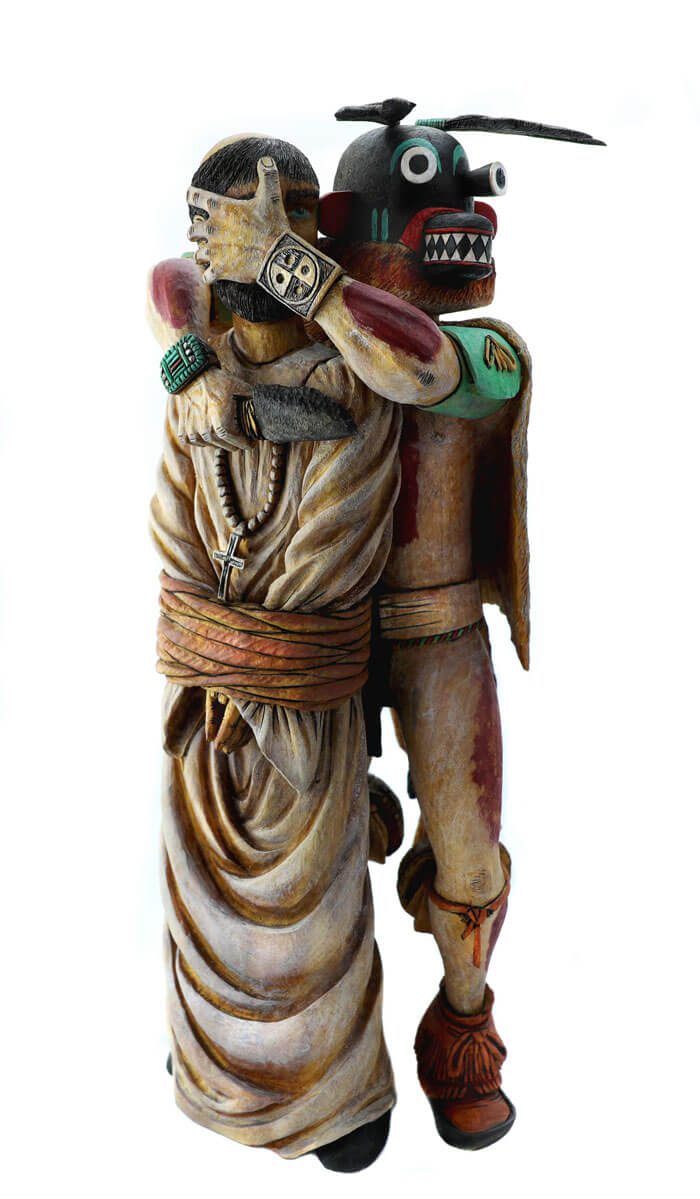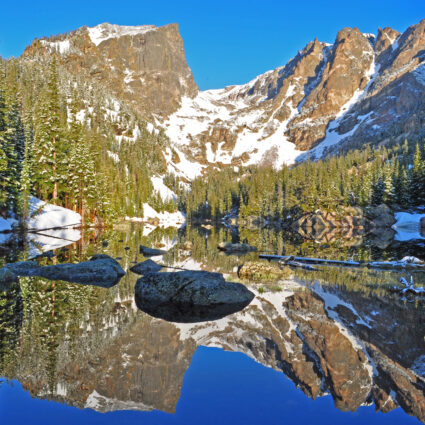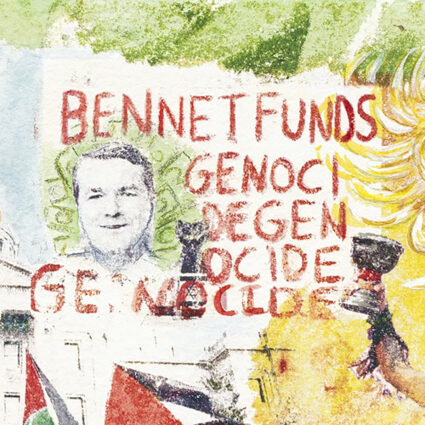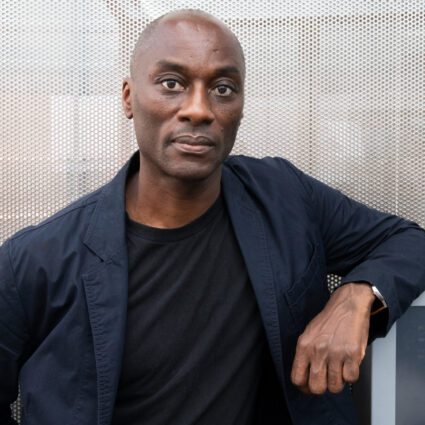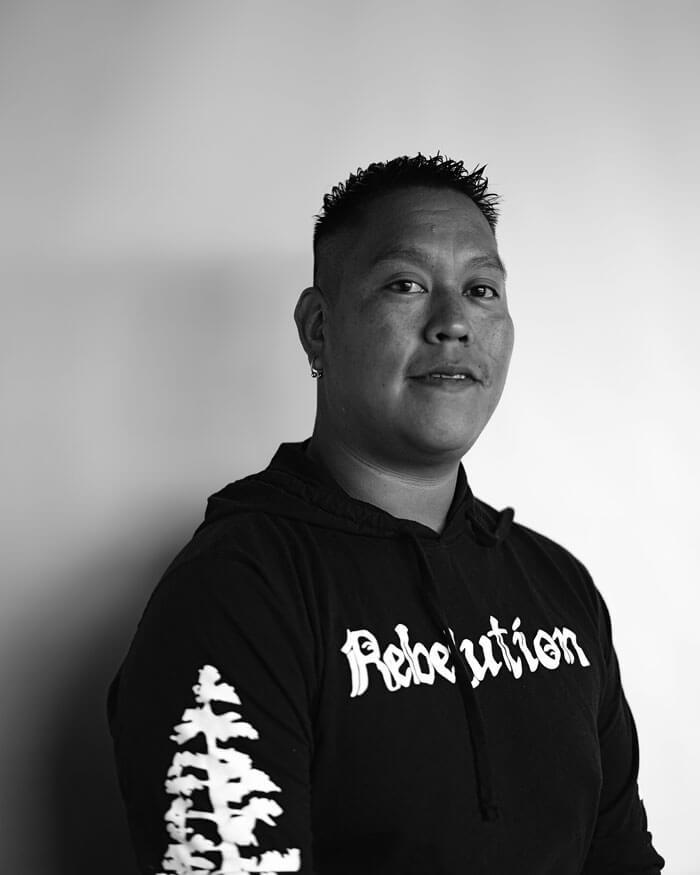
Aaron Honyumptewa imbues his katsina carvings with the traditional ethos of the Hopi people combined with an undercurrent of political activism and a style informed by the graphic gore of heavy metal. My first encounter with Honyumptewa’s work stopped me in my tracks. My mouth agape, insides turning as a helpless spectator, I stared into the vibrantly painted face of a recently beheaded priest, a still-lingering expression of anguish in his eyes.
Honyumptewa’s Priest Killer katsina was unabashed and seemingly out of place in the gallery window amid the tourist-laden, commercialized fantasy of the Santa Fe Plaza. The figure’s disjointed presence echoed an ongoing resistance movement to raise awareness against unjust authoritarian acts.
I caught up with Honyumptewa, who divides his time between Arizona and New Mexico, at Picuris Pueblo, where he expressed his enthusiasm for farming and self-sufficiency, describing fields handed down to him by his Hopi grandfather. Out the back door of his home, Honyumptewa gave me a tour of his carving station and quickly drew my attention to a historic sunbaked mud building that he described as a scalping house used during the Pueblo Revolt. In proximity to such a dark historic site, literally next door to Honyumptewa’s home, it is clear to see the deep well the artist draws on for inspiration to create carvings that are challenging in content. Honyumptewa transforms the rigidity of his material—the root of a cottonwood tree—into fluid action that energizes each portrayal of the various Hopi katsinas, highlighting their lifelike qualities with saturated colors and intricate details.
Before his success as a carver, Honyumptewa previously devoted his expressive energies to heavy metal music, playing drums and leading with vocals, releasing feelings of angst towards modern society. As we spoke, Honyumptewa explained to me the role of katsinas as the deified spirits of the Pueblo peoples, as gift-givers and as embodiments of nature and life. He emphasized how the influence of the richly illustrative subculture of heavy metal influenced his carving style.
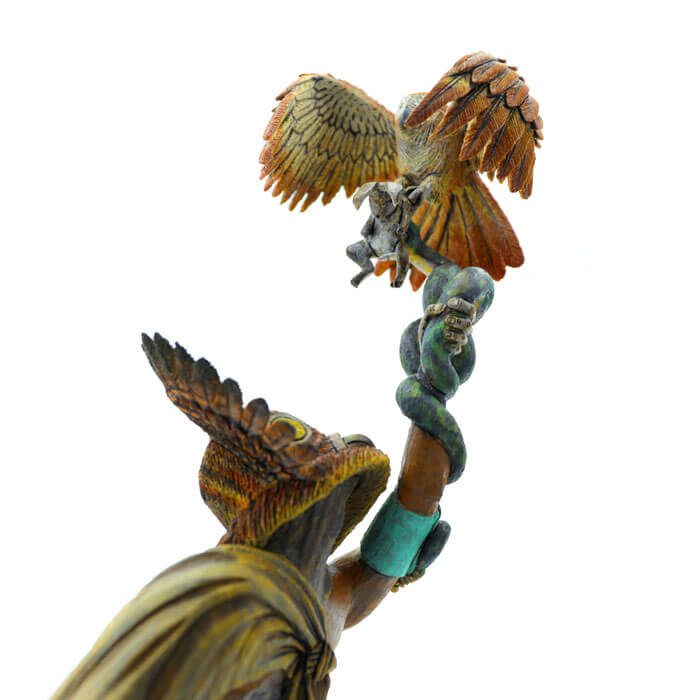
Clayton Porter: Who taught you pottery?
Aaron Honyumptewa: My mom actually. Micaceous clay is a Picuris/Taos thing. Back in the day, Picuris and Taos were one tribe. We’re actually on the ruins, all this through here, this hillside, all over that cemetery with its round houses; all over there are pits. There’s a kiva right here, and on the other side of that corral there’s a kiva pit that’s just in ruins. That’s on top of ruins. These areas were huge, fifteen-story structures.
Really?
It was way bigger than Taos. It was a real trading port for the plains: the Apaches, Comanches, all the people would come here to get resources, since all the Pueblo people planted and cultivated; they would trade things. We were also the most crazy warriors. Taos gets a lot of the credit, most of the credit for the Pueblo Revolt, but the Picuris played a large role. That’s why Picuris is so desolate. After the reconquest of New Mexico, the Spaniards really did a number on us. We went from being 15,000 members to 150. We’re about maybe 200 now, maybe 250 at the most.
Do you go into the kivas that are in ruins?
There’s a big problem with the prairie dogs. They’ve been taking over, so this kiva right here, the top is really brittle. It sucks because the tribe hasn’t really thought about doing any more excavation to rebuild it. It will be a good tourist attraction. They’re trying to redo the museum that we have, but it’s really small. On the other side of the house, this right here is actually a scalp house when they would capture Spaniards. They were tired of all of the brutal tortures they were doing to our people simply because we didn’t want to go to church. We didn’t want to convert, and they were hanging men, dragging women and children through the streets. They got tired of it, so they made these houses where they would capture Spaniards and they would scalp them alive.
It’s pretty crazy living next to this thing. I grew up in this house as a child, and they remodeled it, but it’s actually on the rubble of the old house.
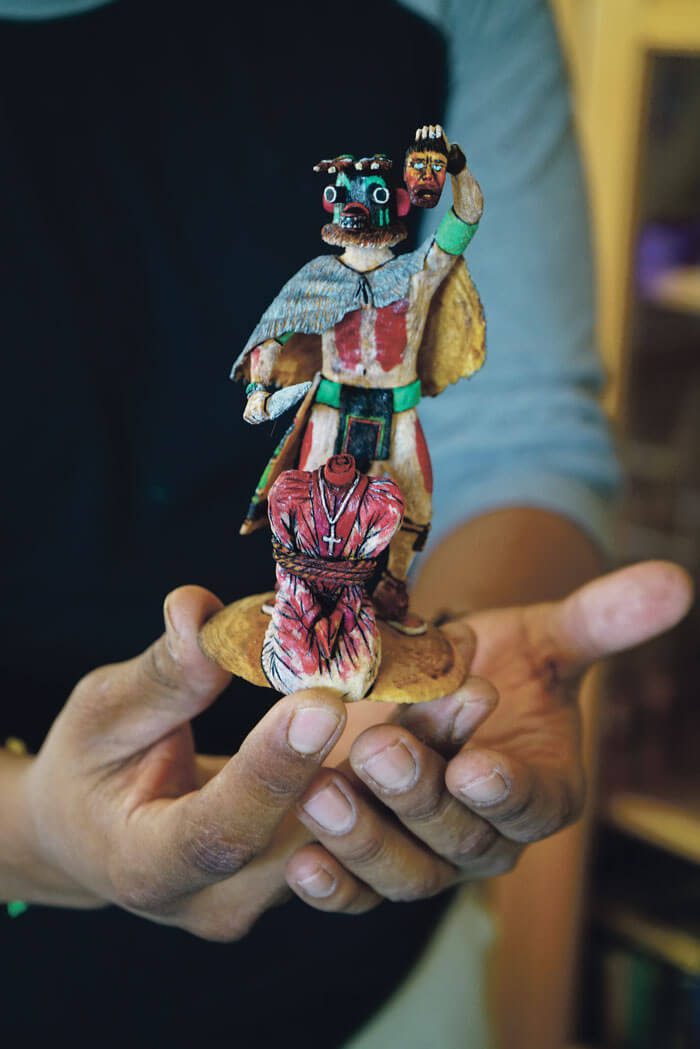
So the tribe decided to refurbish this because of its historic value?
Yeah, because of the tradition… It’s kind of sad because we have such a strong history of rebellion against the church, so after they [the Spanish] came and after the reconquest of the Pueblo, we still accepted Catholicism. It was more like we were still forced. We gave in to the oppression of the Spaniards. That’s something that I grew up with. That’s kind of why I make the priest-killers, because, to me, I feel like without what our ancestors did, we wouldn’t have any tradition at this point, because we would have given up and given in and just accepted everything.
Did making the priest-killers start as your way to acknowledge the struggles of the past, or were there other influences in the priest-killers’ evolution?
That’s kind of why I made the priest-killers also. First, I started out with one priest-killer; someone asked me to make one for them so I made it. Someone asked, “Can you make it with a severed head?” so I made that. Then a gallery in Arizona got a request from some of their collectors who were like, “Can you make one just gory? Gory, gory, we want something really gory.” At first, I was kind of a little hesitant, a little afraid to just let go. But it’s funny, because I was like a metal head growing up, and into horror, gory drawings, and I drew a lot of skulls and things like that, so I was like, “All right. I’ll just go with this.” I started thinking, using my memory of the history to fuel my creativity. I was thinking about all the stories that I’ve heard of what the priest did and stuff like that. It came out pretty crazy. The first one I made, he had a fully severed head, and it sold in three days and they asked me for another one.
I was really surprised, and before I knew it, people approached me and said, “Hey, aren’t you the guy who makes the priest-killers?” It’s pretty cool to be known for that, even though there are some other Hopi carvers who are afraid to make it. Everyone asks me that: “Why do you think they’re afraid to make it?” I just tell them, “I think it’s their misunderstanding,” because he was someone who did something pretty horrific. It has to do with death and murder; a lot of them kind of see it as something bad, something that he shouldn’t have done, but they don’t understand [that] without him, the pueblo revolt wouldn’t have happened. I’m thankful for him, and I’m thankful for my ancestors and for what they did, all the lives that they sacrificed for us to know what it’s like to be Native American, to be proud of whatever tribe you’re from.
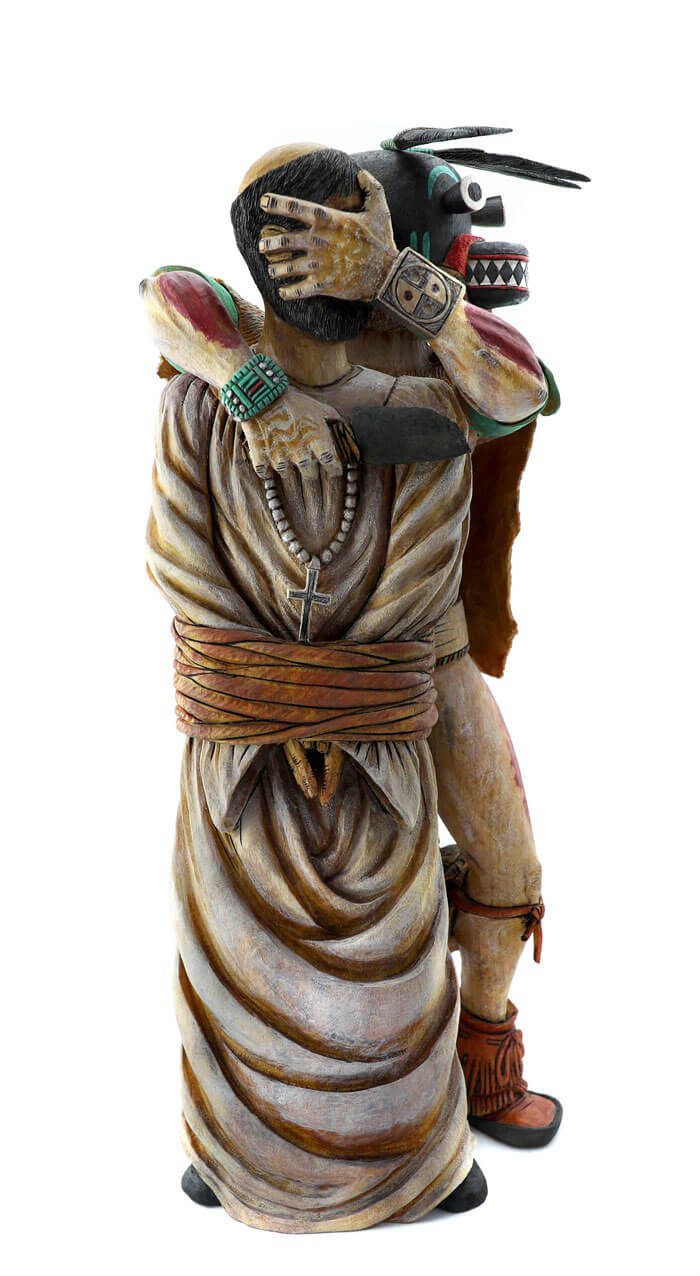
Did you have creative goals early on in your life? Did you have plans for college?
Out of high school, I didn’t even go to college. I just understood that I wanted to experience my existence. I knew that going to college was not going to be my thing, because I knew that I didn’t want to create a career; I just wanted to live free. The way that I was brought up is to be self-sufficient. I knew how to plant, I knew how to do things like that, and once I started learning how to do artwork, I used to make t-shirts. In high school, I met people who were into music just like me, so I ended up in a band. I was in a band for fifteen years—or at least twelve.
What kind of music?
I played heavy metal. We played in the band. My friend actually acquired a drum set and a guitar for his sixteenth birthday, so we just made noise for a long time, and then I met another friend in Santa Fe who played drums. We did pretty good for a while. We actually did a couple small tours, but once I got pregnant with my daughter—it was in 2005, yeah 2005—that’s when I was like, “Yeah, I need to become focused on taking care of my kids.” Being in a band is fun, but it was a distraction, basically. At that point, I wasn’t even carving yet. I was just working. I was actually managing Upper Crust Pizza in Santa Fe for awhile. I was there for about ten years, up until I left.
Now this is—I don’t know—maybe a strange question, or maybe it’s very simple for you but, kachina versus katsina?
Correct pronunciation is “katsina.” Katsi means life, and sina is a dancer, so “life dancer.” For everything that there is in existence, there’s a katsina to represent it, because they’re bringers of life, dance for life and existence.
I got initiated when I was nine, so by the time I was ten, I started making them. My dad [Stetson Honyumptewa] encouraged me because his collectors were asking if his kids did anything. So he’s like, “If you make those, you can sell something like that for ten dollars, fifteen dollars, and that’s your money.” Me and my brothers starting making them. It only lasted for a short while, and then we just stopped. As I got older, my dad was still trying to push me to do stuff. I tried it once, and I only got so far and then I gave up, kind of became afraid, because in my mind all these pieces of wood were valuable to him, and if I ruined them, I just felt like, “Damn, that sucks; I just threw away something valuable.” So I just gave up there. Then, one of the days I decided to try and carve something out of a scrap piece of wood, I colored it with a color pencil, and it came out pretty cool. That gave me the idea that if I ever wanted to try, I could do it. After that, I continued with the traditional stuff, flat dolls like this.
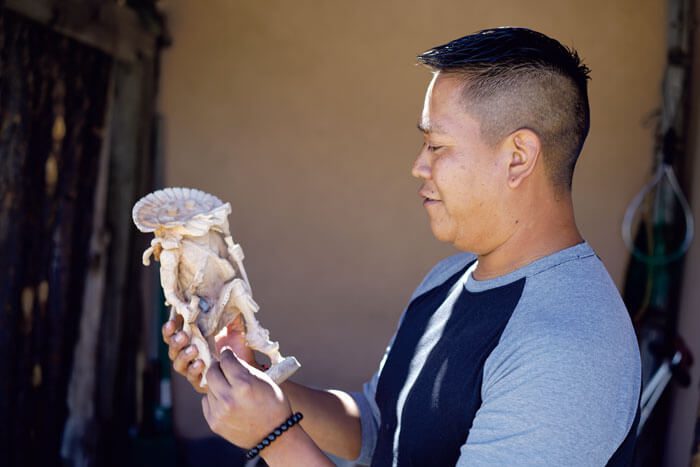
Are any of these yours? Are they all yours?
A good amount of them are actually. Most of them are mine. Having kids, the first doll they give young girls, they call it “Mother of all Katsinas.” This is actually my first, my first three-dimensional piece that I had done. That’s what kind of got my dad to encourage me, because I made that when my daughter was three, and he was like, “Wow! See, all you need is the other half, and you’d have the full doll. You got something, man; just keep it up, keep it up.” That’s where I first started out, because of that. I ended up working to these other pieces.
Did you end up having more kids beside your daughter?
I have one more, a son. I had no plans of having kids when I was growing up, growing up here and seeing and knowing the history of America and my people. I was a pretty angry young guy. The way that I saw the world, I was like, procreation really isn’t in my plan, because I was angry with the world that I was handed and I was like, “Why would I do that to anyone else?” This world is so horrible. It’s so hard for me to just get through it.
Has that changed for you?
Love changed all that. I fell in love with the lady that I’m with. She’s older than me, so she was concerned that when I wanted to have kids, she was not going to be able to. I’m like, “Well, I never really wanted to but…” That’s the ultimate gift of love, in my opinion, is a child. It’s something that’s thought about and it’s a decision. It shouldn’t be something that’s taken lightly, because it’s life.
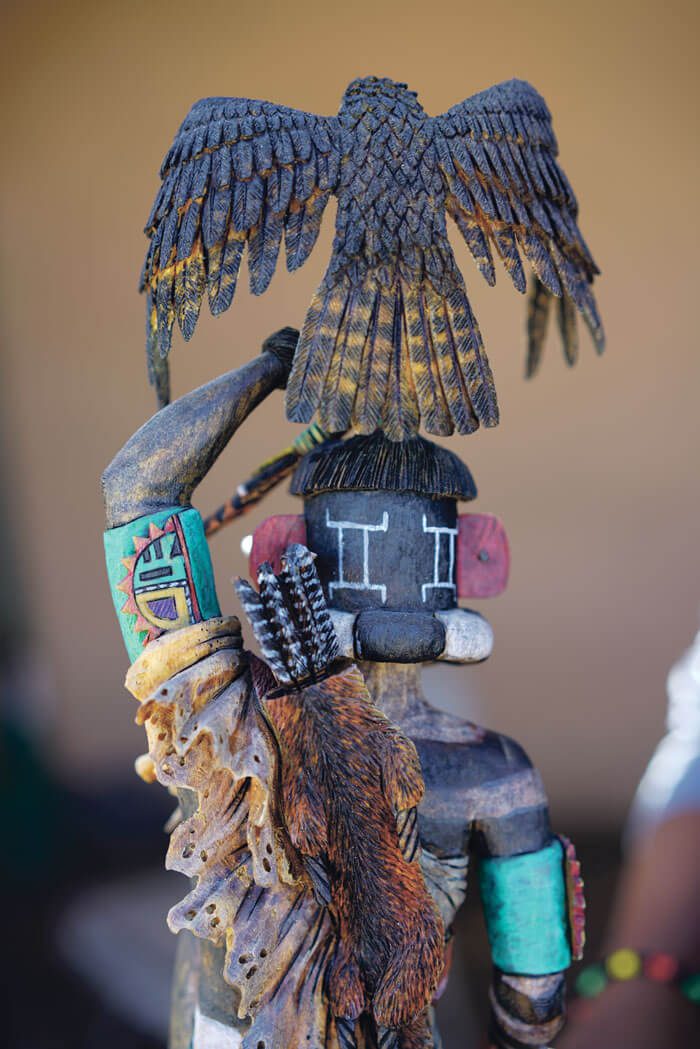
Coming from a Western-style, career-motivated education, I often feel overwhelmed with my dedication to my practice as an artist, not having much time for anything else. Given your heritage, do you feel that is different for you?
The Hopi way of life teaches you how to be hard and live out in desolation. Who would go to the desert to survive if the shit hit the fan? Nobody. Who knows how to survive out there? Only select tribes in Africa and certain different areas where there’s just desolation, but they know how to live. That’s what we were taught: if it hits the fan, never forget how to plant, never forget how to hunt. That’s your communication with the earth, and that’s how you take care of her. My grandfather out there is my biggest inspiration. He’s such a tough man. He’s ninety-three now and he’s still mobile, still moving around, goes to the fields, hoes, weeds, and does a lot of work. He works a lot harder than people who are fifteen, sixteen, twenty. So many people have no idea of work ethic.
It’s because of him—I used to spend summers out there, and he would tell me about how he was brought up and what it was like when he was growing up. He’s a big inspiration to me, and he explained to me that the Hopi way of life makes you hard. If you live it right, that’s where you end up. You get a long life. You live to be an old man with a cane, and if you live the best life, then you just fall asleep and that’s when you go. Growing up going out there all the time, I loved it. That’s what I wanted to do growing up. I wanted to be a farmer and show him that his words didn’t fall on deaf ears and that someone has it in their heart to take it over.
